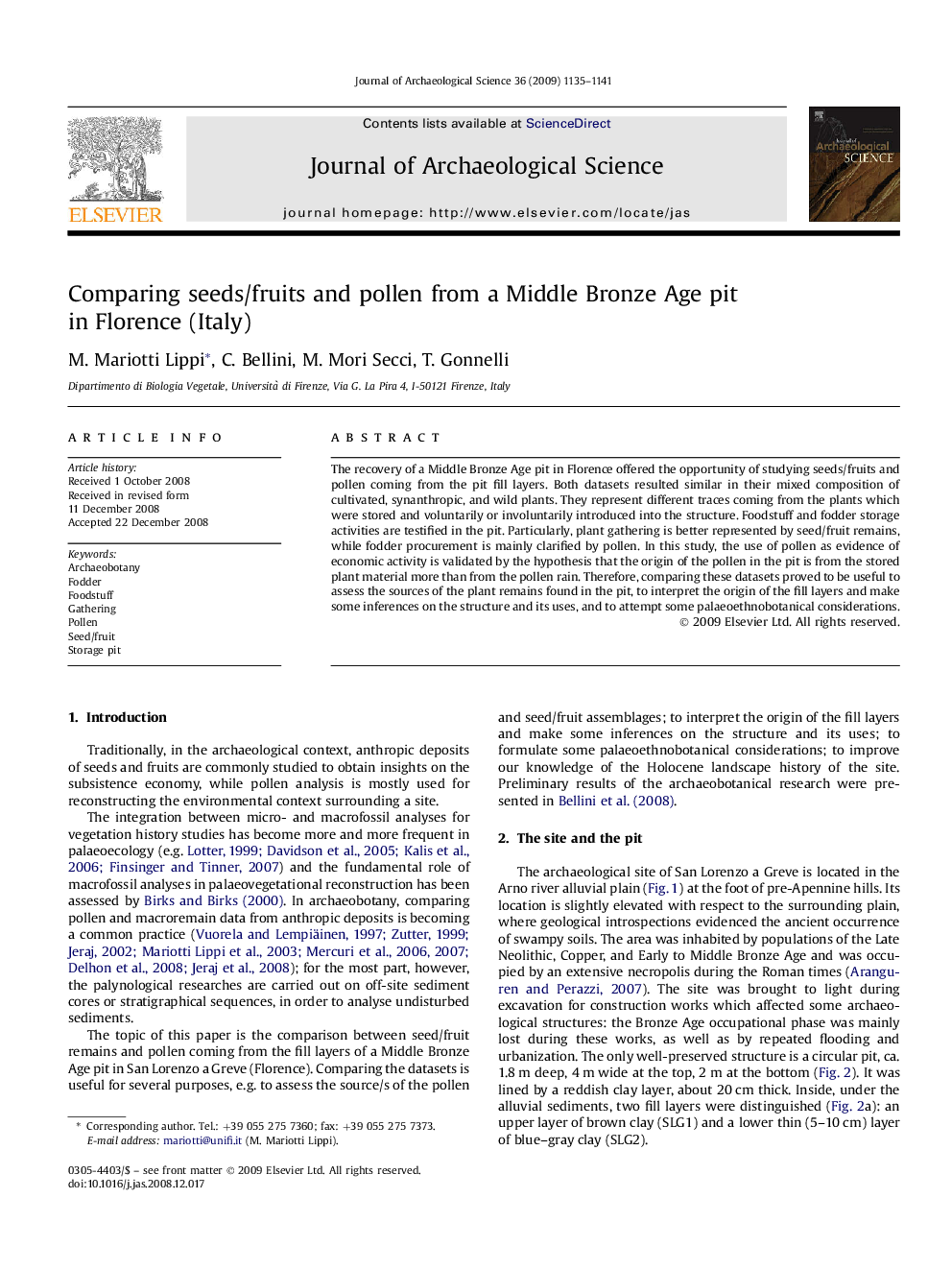| Article ID | Journal | Published Year | Pages | File Type |
|---|---|---|---|---|
| 1037144 | Journal of Archaeological Science | 2009 | 7 Pages |
Abstract
The recovery of a Middle Bronze Age pit in Florence offered the opportunity of studying seeds/fruits and pollen coming from the pit fill layers. Both datasets resulted similar in their mixed composition of cultivated, synanthropic, and wild plants. They represent different traces coming from the plants which were stored and voluntarily or involuntarily introduced into the structure. Foodstuff and fodder storage activities are testified in the pit. Particularly, plant gathering is better represented by seed/fruit remains, while fodder procurement is mainly clarified by pollen. In this study, the use of pollen as evidence of economic activity is validated by the hypothesis that the origin of the pollen in the pit is from the stored plant material more than from the pollen rain. Therefore, comparing these datasets proved to be useful to assess the sources of the plant remains found in the pit, to interpret the origin of the fill layers and make some inferences on the structure and its uses, and to attempt some palaeoethnobotanical considerations.
Related Topics
Physical Sciences and Engineering
Materials Science
Materials Science (General)
Authors
M. Mariotti Lippi, C. Bellini, M. Mori Secci, T. Gonnelli,
